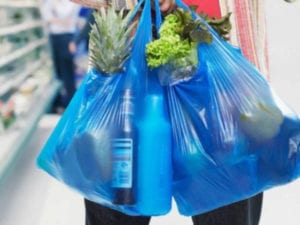South Africa’s amended Plastic Bag Regulations and the new Extended Producer Responsibility Regulations raise concerns about double taxation in the plastic bag sector.
By Garyn Rapson, Paula-Ann Novotny & Emma Bleeker In the past, retailers provided plastic carrier bags to consumers for free and incorporated the cost into the price of goods. But studies conducted by the former Department of Environmental Affairs and Tourism in 2002 shed light on a serious plastic waste problem, noting that, unlike other waste types, plastic had no organisation dedicated to its disposal and recycling. In 2003, under the ambit of the Environment Conservation Act, 1989, the Plastic Carrier Bags and Plastic Flat Bags Regulations (“Plastic Bag Regulations“) were published. These were followed by the introduction of a plastic bag levy in 2004 under the Customs and Excise Act, 1964. It was an indirect tax on the movement, manufacture or consumption of goods and services, which in this case retailers (specifically, supermarkets) charge on every sale of a plastic bag. The Plastic Bag Regulations prohibit the manufacture, trade, and commercial distribution of domestically produced and imported plastic carrier bags and plastic flat bags unless the bags comply with the “Compulsory Specifications” (such as a minimum thickness of 24 microns), subject to certain exclusions. These design specifications were intended to make plastic bags more environmentally friendly and reusable. It became an offence for manufacturers, traders, and commercial distributors to contravene the Plastic Bag Regulations, and these regulations remain in force today. In 2019, the Department of Forestry, Fisheries and the Environment initiated a review of the Plastic Bag Regulations to see how they could be improved. On 7 April 2021, Minister Barbara Creecy published the amended Plastic Bags Regulations, which included the introduction of a definition of “Post-consumer recyclate”. This was defined as: “material generated by households or commercial, industrial or institutional facilities, in their role as end-users of the product, which can no longer be used for its intended purpose, and includes returns of material from the distribution chain, as well as inhouse scrap that already contains post-consumer recyclate content“. The amended regulations set goals for the minimum percentages of post-consumer recyclate that plastic bags should contain at certain intervals until they achieve a 100% post-consumer recyclate content by 1 January 2027. The amended regulations provide for a person to apply for an exception to the post-recyclate threshold. The Plastic Bag Regulations are considered upstream regulations, as they regulate the production and composition of products. Downstream regulations regulate the waste implications associated with products after their consumption, or what is referred to as their “post-consumer phase”. South Africa recently published its own set of downstream regulations, known as the Extended Producer Responsibility (“EPR“) Regulations, under the ambit of the National Environmental Management: Waste Act, 2008, which aim to promote a “circular economy”.Arguably, the new downstream regulations also capture the plastic bag sector. The new EPR Regulations are aimed at drastically reducing the amount of waste that enters landfill sites. Essentially, they require producers, manufacturers, importers, and brand owners to include an increasing amount of recycled material in their products.
The EPR Regulations apply only to products and their related waste streams identified by the Minister in the Gazette. They envisage that all producers of identified products and their related waste streams will establish and implement an EPR Scheme or join an EPR Scheme established by a producer responsibility organisation (“PRO“) on behalf of its producers. The EPR Scheme for the paper and packaging sector and some single-use products applies to identified products that include an array of paper and paper packaging material, plastic packaging, biodegradable and compostable packaging, single-use plastic products (including if compostable or biodegradable), glass packaging and metal packaging. In terms of this Scheme, packaging is defined as any material, container, wrapping or corrugated cases used for the containment, transport, handling, protection, promotion, marketing or sale of any product or substance. It may be primary packaging containing the actual product, or secondary or tertiary packaging, typically containing products already packaged in primary packaging. It can be argued that plastic bags fall within the ambit of this definition, as they are secondary or tertiary packing used to contain, transport, handle or protect goods and can be branded for marketing purposes. A producer, in terms of the proposed amendments to the EPR Packaging Scheme, is obliged to comply with the EPR Regulations if it places more than 10 tonnes of plastic bags into the market annually. Depending whether the brand operates/is domiciled within South Africa, the liable producer could be the manufacturer, converter, brand owner, licensed agent, importer or retailer. The lack of clarity on who bears the responsibility as the “producer” leaves much to be desired as set out in our update, Over-extension of Extended Producer Responsibility. A notable consideration for producers is that an EPR fee is chargeable on identified items, which will fund the relevant EPR Scheme. This fee must be indicated as a separate line item on every invoice and cash sale receipt for each purchase (or be publicly available on the PRO’s website in terms of the proposed amendments). This raises the question whether this EPR fee will be charged on plastic bags in addition to the existing plastic bag levy of ZAR 0.25. Other obligations for producers in terms of the EPR Regulations include having to submit information about the ‘lifecycle’ of their products, reduce the consumption of natural resources, and show that products are designed to be more environmentally friendly. Under the EPR Regulations, offenders found guilty of non-compliance can be imprisoned for up to 15 years, or fined, or both. Producers of plastic bags now face potential additional obligations under the EPR Regulations which could see a double “taxation” on plastic bags. The advantages of both the Plastic Bag Regulations and the EPR Regulations applying to plastic carrier and plastic flat bags is that they are the only waste type to be regulated both upstream and downstream. However, some plastic bags that do not fall within the scope of the Plastic Bag Regulations do fall within the ambit of the EPR Regulations, such as garbage bags. The implications of applying both sets of regulations to the producers of plastic bags is yet to be seen.







